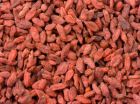(Press-News.org) AMES, Iowa – Advancements in fabrication technologies may lead to superlenses and other designer optical materials, according to an Iowa State University and Ames Laboratory physicist.
In an article titled "Improving Metamaterials" published in the Perspectives section of the Dec. 17 issue of the journal Science, Costas Soukoulis and Martin Wegener write about the man-made materials designed to deliver certain properties not found in nature.
Soukoulis is an Iowa State University Distinguished Professor and Frances M. Craig Professor of Physics and Astronomy and a senior scientist for the U.S. Department of Energy's Ames Laboratory who collaborates with the University of Crete in Greece and with the Institute of Electronic Structure and Laser at the Foundation for Research and Technology – Hellas, Greece. Wegener is the group leader for the Institute of Applied Physics at the Karlsruhe Institute of Technology in Karlsruhe, Germany.
Metamaterials, sometimes called left-handed materials, are exotic, artificially created materials that provide optical properties not found in natural materials. Metamaterials are able to refract light to the left, or at a negative angle. Natural materials can't do this.
"This backward-bending characteristic provides scientists the ability to control light similar to the way they use semiconductors to control electricity, which opens a wide range of potential applications," Soukoulis said.
One possibility is using metamaterials to develop a flat superlens that operates in the visible light spectrum.
"Such a lens would offer superior resolution over conventional technology, capturing details much smaller than one wavelength of light to vastly improve imaging for materials or biomedical applications," Soukoulis said. "A metamaterial superlens could give researchers the power to see inside a human cell or observe DNA."
The Science article by Soukoulis and Wegener describes the development of optical metamaterials from thin films to 3-D nanostructures. They also describe the challenges of further, practical development of the new materials.
"First, the structures must be tiny and are therefore difficult and expensive to produce," Soukoulis said. "Optical metamaterials also absorb light, making it difficult to create a metamaterial superlens."
But Soukoulis and Wegener offer some hope in their paper. They say experiments have demonstrated optical metamaterials can operate within the visible light spectrum, 3-D optical metamaterials can be produced and light loss in metamaterials can be reduced.
They wrote the ideal optical metamaterial requires all three properties. Wrapping them all into one new metamaterial will take more research and development. And then, researchers will need to find ways to reduce the cost of production.
But, wrote Soukoulis and Wegener, the introduction of advanced fabrication techniques to metamaterials research "may lead to realization of such designer materials."
INFORMATION:
Iowa State, Ames Lab physicist developing, improving designer optical materials
2010-12-17
ELSE PRESS RELEASES FROM THIS DATE:
Liver cancer in cirrhotic patients effectively treated with radiofrequency ablation
2010-12-17
Researchers from Italy determined that radiofrequency ablation (RFA) is a safe and effective therapy for managing hepatocellular carcinoma (HCC) in cirrhotic patients. The high repeatability of RFA is advantageous in controlling recurrences of cancerous tumors in the liver. Results of this 10-year retrospective study are available in the January 2011 issue of Hepatology, a journal published by Wiley-Blackwell on behalf of the American Association for the Study of Liver Diseases (AASLD).
HCC is the third leading cause of death from cancer worldwide and according to the ...
Scientists discover powerful biomarker panel for the early detection of breast cancer
2010-12-17
In the war on cancer, perhaps there is nothing more powerful in a physician's arsenal than early detection. Despite recent advances in early detection and treatment, breast cancer remains a common and significant health problem in the United States and worldwide. Approximately one in ten women will get breast cancer in their lifetime and more than half of women with late stage cancer (II and III) have no cure or effective therapeutic available.
Using a new, powerful method for rapidly screening molecules associated with disease, proteomics expert Joshua LaBaer and colleagues ...
Study shows garlic could protect against hip osteoarthritis
2010-12-17
Researchers at King's College London and the University of East Anglia have discovered that women who consume a diet high in allium vegetables, such as garlic, onions and leeks, have lower levels of hip osteoarthritis.
The findings, published in the BMC Musculoskeletal Disorders journal, not only highlight the possible effects of diet in protecting against osteoarthritis, but also show the potential for using compounds found in garlic to develop treatments for the condition.
A relationship between body weight and osteoarthritis was previously recognised, although it ...
Lost images of 'human exhibits' in Britain discovered
2010-12-17
A University of Leicester researcher has discovered two photographic images, presumed lost, of native Americans brought to Britain by Roger Casement a century ago.
Dr Lesley Wylie, Lecturer in Latin American Studies in the School of Modern Languages, University of Leicester, made the discovery during her research for a book on the Putumayo, a border region in the Amazon. Her book forms part of the AHRC-funded research project, American Tropics: Towards A Literary Geography, based at the University of Essex.
The photographs were found among a photographic collection ...
Alcoholics beware -- genetic variation linked to liver cirrhosis in Caucasians
2010-12-17
A new study by German researchers found that a variation in the PNPLA3 (adiponutrin) gene was associated with cirrhosis of the liver and elevated transaminase (liver enzyme) levels in alcoholic Caucasians. The risk of cirrhosis in alcoholics in the genetic high risk group might be as high as 25% to 50%. Full findings are published in the January 2011 issue of Hepatology, a journal of the American Association for the Study of Liver Diseases.
Alcoholic liver disease (ALD)—ranging from alcoholic fatty liver to alcohol induced liver fibrosis and cirrhosis—accounts for more ...
Goji berries have the same nutrients as fruits and vegetables and a placebo effect
2010-12-17
While the consumption of Goji berries has risen dramatically over the last months, their properties have not been scientifically proven yet by any relevant clinical intervention study with humans. Most of Goji berries' components are contained in the recommended fruit and vegetable intake in balanced diets. The only difference is the "significant placebo effect" on people consuming them. Also, the species Lycium Barbarum –to which Goji berries exported from China belongs– originally comes from the Mediterranean and belongs to the Solanaceae family, the same family to which ...
No change in health gap between England's richest and poorest
2010-12-17
Significant health inequalities still exist between the country's richest and poorest according to the latest findings from the biggest annual survey of health in England, The Health Survey for England. The survey, conducted by the National Centre for Social Research and UCL and funded by The NHS Information Centre, shows that people in the lowest income households continue to experience much worse outcomes across key health measures than people in the highest income households.
Men and women in the lowest income bracket are three times more likely than those in the highest ...
Blocking the critical structure that lets cancer cells move -- their feet
2010-12-17
DURHAM, N.C. -- Scientists now know that some cancer cells spread, or metastasize, throughout the body the old-fashioned way -- by using their feet. But researchers at Duke Cancer Institute have discovered a way to short-circuit their travels by preventing the development of these feet, called invadopodia. This discovery is even more important because preventing the development of these "feet" also eliminates the action of proteins present in the feet that burn through intact tissue and let cancer cells enter new cells.
The results could yield a treatment to prevent the ...
Report: Policies to spur renewable energy can lower energy costs
2010-12-17
The South could pay less for its electricity in 20 years than is currently projected if strong public policies are enacted to spur renewable energy production and use, according to a report released today by researchers at the Georgia Institute of Technology and Duke University. The 190-page report, "Renewable Energy in the South," builds on a short policy brief released last summer and provides an in-depth assessment of the scope of renewable energy resources in the South and their economic impacts on electricity rates and utility bills in the region.
Skeptics of renewable ...
Kids got the blues? Maybe they don't have enough friends
2010-12-17
Montreal, December 16, 2010 – Friendless kids can become social outcasts who risk spiraling into depression by adolescence, according to new research from Concordia University, Florida Atlantic University and the University of Vermont. Yet for most shy and withdrawn children, the study reports in the journal Development and Psychopathology, friends can be a form of protection against sadness.
"The long-term effects of being a withdrawn child are enduringly negative," says lead author William M. Bukowski, a psychology professor and director of the Concordia Centre for ...



